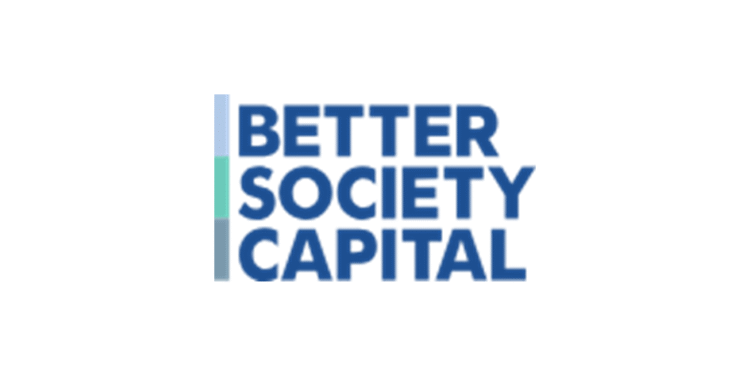What if you could grow your money while also helping to solve urgent social problems? This question lies at the heart of a powerful financial movement gaining momentum. It challenges the old idea that making a profit and doing good are separate goals.
In the United Kingdom, a major organization has been proving this is possible for over a decade. Originally launched in 2012, this institution recently changed its name to better reflect its core purpose. Its mission is to channel private finance toward organizations tackling the nation’s most pressing social issues.
The model is unique. It uses funds from dormant bank accounts, combined with money from major banks, to make investments. These are not donations. They are strategic investments designed to generate both financial returns and measurable social outcomes.
Since its founding, this impact investor has deployed over £1 billion directly. More importantly, it has attracted nearly £3 billion in additional private capital. This combined effort has supported thousands of charities and social enterprises.
The result is a remarkable story of growth. The UK’s social investment market has expanded from £800 million to more than £10 billion. This represents a 12-fold increase, demonstrating the scalability of this innovative approach.
Key Takeaways
- A major UK financial institution recently rebranded to sharpen its focus on creating positive social change.
- It operates as an impact investor, seeking both financial returns and measurable social benefits.
- The organization was initially funded with money from inactive bank accounts and contributions from large banks.
- Its work has helped grow the UK’s social investment market significantly since 2012.
- The model attracts substantial private capital to amplify its effect on critical community challenges.
- It supports a vast network of organizations working on issues like homelessness and unemployment.
Better Society Capital: Transforming Social Investment
Bipartisan political groundwork laid the foundation for a revolutionary approach to funding social good. The organization’s conceptual roots extend to the early 2000s, gaining momentum under the Labour administration before its official launch.
Foundations in the Big Society Initiative
The institution formally began operations in 2012. It was a central part of then-Prime Minister David Cameron’s Big Society agenda. This vision aimed to empower communities and social enterprises.
Cameron stated the organization would help charities prove their business models. The goal was to replicate successful interventions across the country. This brought scaling principles to the social sector.
Initial funding combined £425 million from dormant bank accounts with £200 million from major banks. This created a substantial £625 million endowment to kickstart its mission.
Key Milestones and Rebranding Journey
In April 2024, a significant evolution occurred. The organization changed its name to Better Society Capital. This shift was designed to better reflect its core mission.
The new name provides a clearer articulation of its purpose. It also helps distance the institution from specific political associations. This move ensures broader, lasting appeal.
Endorsement came from across the political spectrum. Former Labour Prime Minister Gordon Brown wished it continued success under its new name. This demonstrated strong bipartisan support for the model.
Chief Executive Stephen Muers framed the change as an opportunity. It allowed the organization to reaffirm its mission and open new partnership avenues. The goal remains maximizing value for all stakeholders.
Investment Strategies and Social Impact Outcomes
Social investment strategies break traditional boundaries by demanding measurable results across financial and humanitarian dimensions. This approach creates accountability where success means delivering both returns and real community benefits.

Impact Investing and Capital Recycling
The organization practices a disciplined form of impact investing that ties financial returns to achieved social outcomes. This ensures capital flows toward interventions that demonstrably work.
A key innovation is capital recycling. Returns from successful ventures are reinvested into new initiatives. This multiplier effect has grown the original endowment significantly.
All supported social enterprises and charities must use standardized metrics. This brings market discipline to social outcomes, directing funds to what works best.
Success Stories and Measurable Outcomes
Food Works Sheffield demonstrates this model’s effectiveness. It rescues surplus food, distributing it to over 5,000 people monthly through an affordable pricing system.
New Leaf in Birmingham helps people facing employment barriers. It uses loans for training and operates its own recruitment agency, addressing multiple social issues simultaneously.
The scale of impact is substantial. Over 7 million people have received support through various programs. More than 7,000 homes have been delivered, housing approximately 15,000 individuals.
Community-owned solar farms and preventive healthcare initiatives show the diverse applications of this approach. These investments create value across financial, social, and governmental dimensions.
Partnerships, Government Involvement, and Market Growth
Unlocking dormant financial assets represents a powerful mechanism for funding social good. This strategy converts idle money into active capital for communities.
The organization continues to receive government support. In March 2023, it secured £31 million from dormant accounts.
The government expects to allocate another £350 million by 2028. This shows strong, ongoing policy backing.

Mobilizing Dormant Assets and Attracting Private Investment
Partnerships with mainstream financial firms are key. In December 2020, a collaboration with Schroders raised £75 million from public market investors.
This brought new capital into the social investment market. Future opportunities are significant.
Another £1.7 billion has been found in dormant insurance and pension accounts. Around £800 million could be available for social purposes.
Government Initiatives and Regulatory Support
Political changes are seen as a chance for renewed engagement. The model attracts private money to help tackle social challenges.
This is vital when government budgets are tight. It offers a sustainable way to address pressing issues.
Future Opportunities in Social Impact Investing
Sir Ronald Cohen, a founding figure, aims to unlock £50 billion in private capital over ten years. He proposes innovative funds, like one for youth skills training.
Investors would earn returns only if trainees get and keep jobs. This aligns financial incentives with positive change.
Globally, sustainability-linked bonds hit $939 billion in 2023. This trend shows a growing appetite for investments that create value beyond profit.
Anna Shiel, Chief Investment Officer, sees exciting opportunities. The goal is to attract new investors seeking to drive positive social change with their capital.
Conclusion
A new financial paradigm has emerged that successfully merges profit motives with humanitarian goals. This approach represents a significant shift in how we address persistent community challenges.
The organization’s journey from its original launch to its recent name change reflects the maturation of the entire sector. It has moved beyond political associations to become a broadly supported model.
Over twelve years, the better society approach has demonstrated remarkable success. It grew its initial funding significantly while attracting substantial private investment.
The model offers valuable lessons for American policymakers and investors. It shows how structured returns tied to outcomes can drive meaningful change.
This innovative framework creates measurable value across financial, social, and community dimensions. It represents a sustainable path forward for addressing complex social issues.
FAQ
What is the origin of Better Society Capital?
The organization was launched in 2012 as Big Society Capital, an initiative from the government of former Prime Minister David Cameron. It was established using money from dormant bank accounts to help grow the social investment market in the UK.
Why did Big Society Capital change its name?
The name was updated to Better Society Capital to more accurately reflect its core mission. The new title better communicates its goal of creating positive social change by supporting charities and social enterprises tackling various issues.
How does Better Society Capital’s investment strategy work?
It acts as an impact investor, providing capital to fund managers and other financial organizations. These groups then invest in charities and social enterprises. The strategy focuses on generating both a financial return and a measurable positive social outcome, with profits often being recycled into new projects.
What role does the UK government play in this organization?
The government was instrumental in its creation, authorizing the use of dormant assets. It continues to provide regulatory support to foster the growth of the impact investment sector, encouraging private investors to join in tackling social problems.
What kind of social issues does Better Society Capital aim to address?
The organization funds projects that tackle a wide range of challenges. These include homelessness, youth unemployment, and mental health support. The goal is to create lasting value for communities across the country.
How can other investors get involved?
Other investors, from individuals to large institutions, can participate by partnering with the organization or investing through its network of fund managers. This collaboration helps scale solutions and increase the overall positive impact on society.





